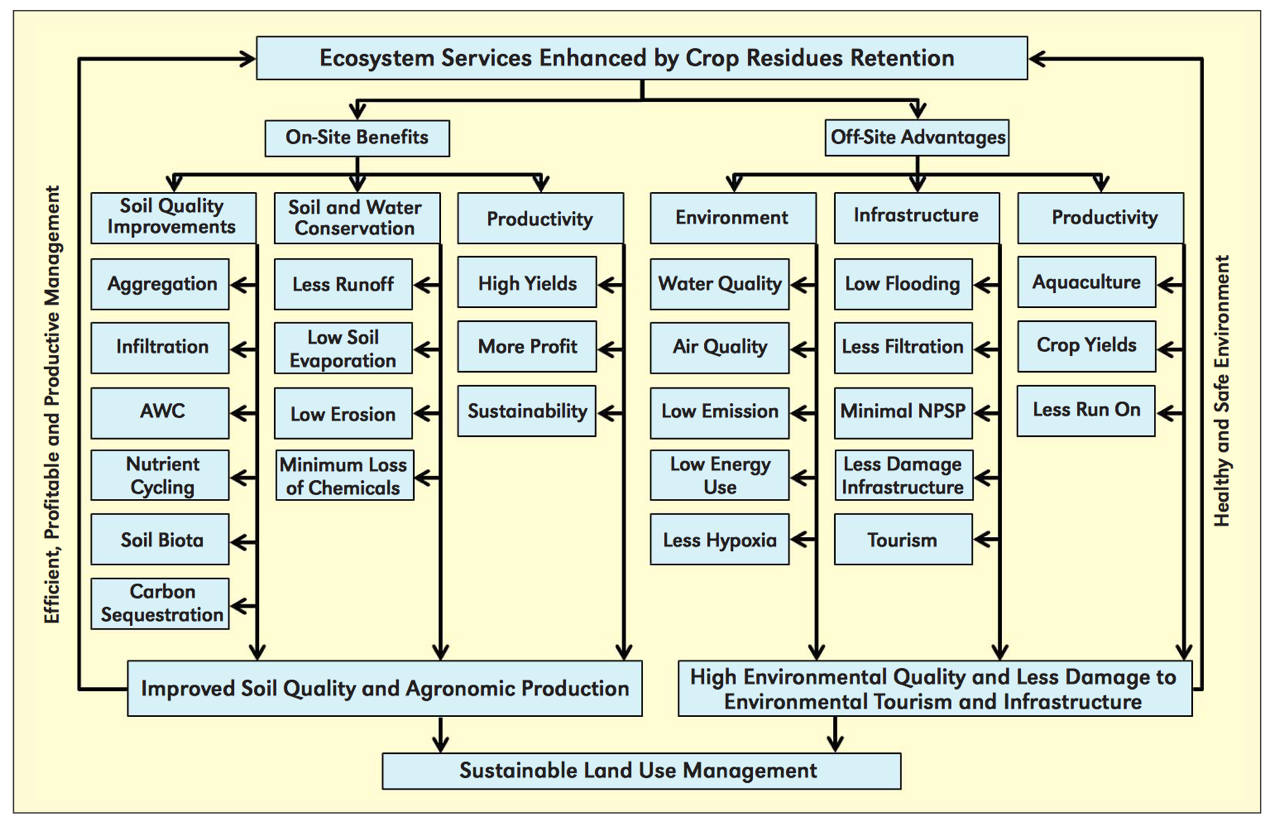While covering the no-tillage movement for more than 40 years, I’ve never come across a chart that does as good a job of summarizing the many benefits of this reduced tillage system than the one shown here.

Agronomic productivity and environmental quality impacts of crop residues retention. AWC - available water capacity, NPSP = non-point source pollution (Adapted from Lal, 2008)
Although looking at the impact that agronomic productivity and environmental quality when crop residue is kept on top of the soil with any number of conservation tillage systems, it really describes the many benefits of no-tillage. In one easy-to-digest chart, the author has captured numerous on-site and off-site benefits of improving crop production with no-till.
The chart was developed and published in 2008 by Ohio State University soil scientist Rattan Lal. Much of his research work has centered around the many benefits of adopting no-tillage and the role this reduced tillage practice it plays in sequestering soil carbon and reducing the impact of the greenhouse effect on the world’s population.
As I’ve watched the U.S. no-till acreage grow from only 3.3 million acres in 1972 to around 100 million acres today, it’s been all about enjoying the many benefits of keeping crop residue on the soil surface. As spelled out in the accompanying chart, improvements in ag productivity, soil and water conservation and soil quality and health are definitely impacted by residue retention. And this is the main reason that we’re seeing growing acceptance of no-till not only in North America, but also throughout the world.
Learn More
-
Digging Into the Principles of Regenerative Ag
Based on the principles of building healthy soil, regenerative ag aims to not only sustain farm productivity but to actually work with nature to regenerate the soil, increase biodiversity and enhance the farming ecosystem.






